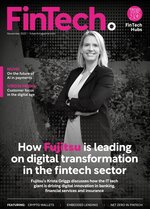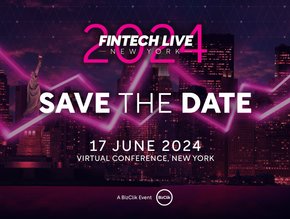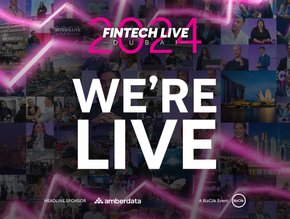Embedded lending: helping consumers through a rough economy

Embedded financial services have proven to be a game-changer for the industry, allowing non-financial operators to bring financial products and experiences directly to consumers in the places where they already interact online. It’s the technology that allows car rental or holiday booking sites to offer insurance at the point of sale, or merchants to offer instalments at checkout.
Indeed, embedded financial services on the whole are expected to reach a market valuation of US$83bn this year – up from US$65bn last year – according to Grand View Research. The runaway leader in this category, says Ernest & Young (EY), is embedded payments.
According to EY’s research, embedded payments are worth US$2.5tn a year and could reach a volume of US$6.5tn by as soon as 2025. Embedded payments, and the data underlying them, help consumer brands to launch new propositions, increase loyalty, and boost customer retention.
“As brands integrate the payment flow, it becomes easier to add other products to that payment flow, like lending or insurance,” explains Aaron Byrne, EY-Parthenon Financial Services Leader.
Growth of embedded banking should prompt banks to act
The promise being shown by embedded lending is something that PwC concurs with. The authors of PwC research – which itself predicts that embedded finance applications will increase five-fold between now and 2032 – believe that “embedded lending is showing great appeal” for non-financial institutions entering the marketplace for the first time.
“Software providers, in particular, are offering embedded finance services by leveraging external customer data, next-generation decisioning models and API-enabled technology,” they say. “For example, financial software provider Intuit has expanded from providing accounting tools to offering small business loans through a subsidiary with a commercial banking licence, using financial information and credit histories inputted into the accounting software.”
The growth of embedded lending should cause incumbent institutions to worry, PwC says. “Incumbent banks risk losing market share in the credit space to new entrants, particularly as lending becomes more embedded into consumer sales journeys or small and midsized business operations. Many of these non-traditional players, especially from the technology industry, are upending conventions about how to determine who gets credit, by drawing on data rather than credit reports. They’re also offering clear value to customers and helping them grow.”
The consultancy group believes that banks will need to do more than simply launch copycat versions of buy-now-pay-later (BNPL) products in order to survive, and fend off plucky newcomers. This is particularly true, as lending products are some of the most profitable lines of business for banks and financial institutions.
Until now, there has been a misconception that regulatory hurdles and concerns around risk would be enough to put off new players, but trailblazing examples from the worlds of big tech and retail have already shown that non-finance brands can compete toe-to-toe with legacy institutions – and they must either learn to adapt, or risk losing market share.
Economic headwinds waning, but consumers still struggling
With concerns about the state of the economy continuing, embedded lending has an opportunity to seize its moment. Mollie’s latest European Ecommerce Report, published in September, shows that consumers are still concerned about the state of the economy. A staggering 99% of respondents say they have modified their buying behaviour in the last 12 months. In addition, roughly half of consumers (51%) feel negatively about the state of the economy, although a similar percentage (47%) are optimistic about the chance of it improving in the short term.
“Although we don’t face quite the headwinds we did last year, economies across Europe remain in a precarious position,” Ken Serdons, Mollie’s Chief Commercial Officer, said at the time.
These economic conditions could necessitate consumers needing access to smaller amounts of credit more frequently – and, with businesses still struggling too, extending credit lifelines to smaller firms could help them ride out day-to-day turbulence and remain resilient. This could include independents having access to credit through their POS app, or companies enjoying more favourable repayment terms through the AR/AP software they use.
Nonetheless, despite the abundant positives that embedded lending can bring, banking and finance expert Mike Smith says there are still things we need to be wary of: "Embedding financial services in commonly used digital platforms can make it easier for consumers to access credit,” he explains.
“When financial offerings are integrated into apps and websites people use daily, lenders can use more data to understand a person's creditworthiness, beyond just traditional credit scores.
“This is great for those who might not have a strong conventional credit history but are responsible in other financial areas. The convenience of accessing credit within familiar platforms can make the process less intimidating and more user-friendly.
“By reducing these barriers, many consumers, especially those often overlooked by traditional banks, can find it easier to secure the credit they need.
Despite the positives, embedded lending still raises concerns
“To add a bit of nuance, embedded lending also raises concerns,” Smith says. “The use of alternative data to gauge creditworthiness might inadvertently penalise those unfamiliar with certain platforms or technologies.
“There's also an increased risk of consumers accessing credit impulsively due to the seamlessness of the process. Data privacy is a significant worry, as collecting more information can make users vulnerable if there's a data breach or misuse.
“Finally, a blurred line between financial services and non-financial platforms might make it harder for consumers to differentiate or choose between legitimate services and potentially predatory ones."







